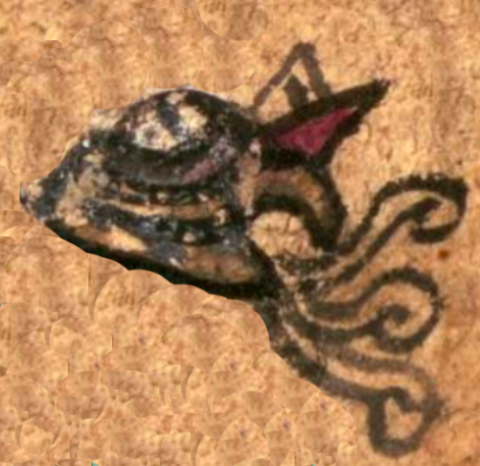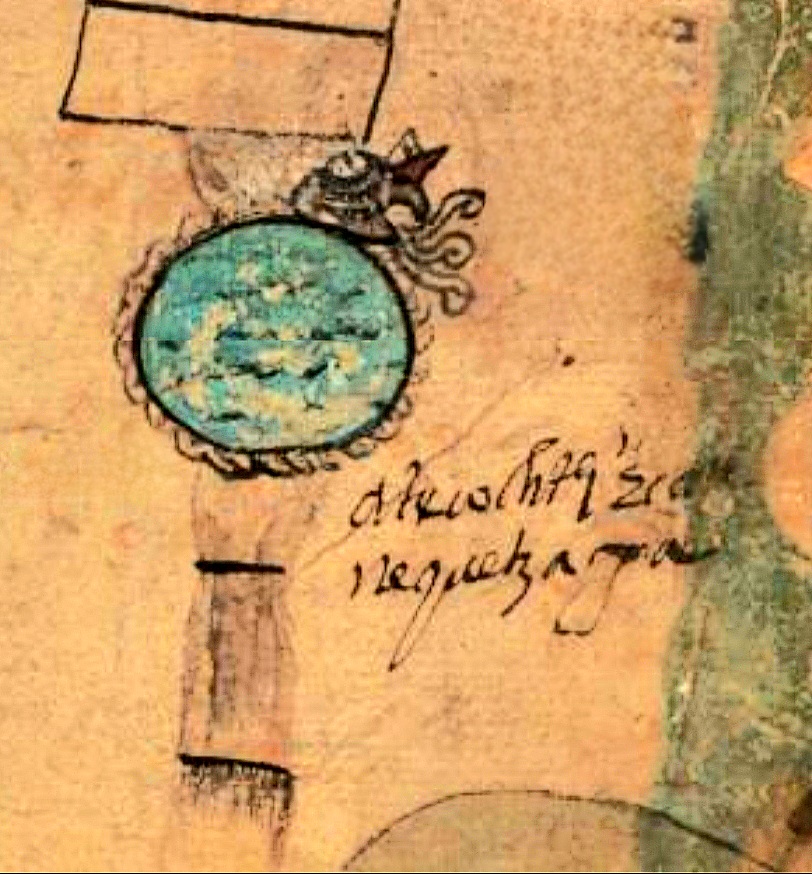Ecatl (CQ)
This element for wind or the wind divinity/deity sacred force (Ehecatl) shows the head of what appears to be a bird, shown in profile, looking to the viewer's right. It has a complicated beak (or what some sources describe as a duck bill, but which the Nahuas apparently perceived as a wind-blowing device) with two pointed parts at the top, one natural/white and one red, above the hooked upper beak. Emerging from the bird's open mouth are what appear to be three curling speech scrolls, also natural or white, perhaps representing air/breath (ecatl) or wind (ehecatl).
Stephanie Wood
This element comes from a compound meaning, perhaps, "The watering hole where Ehecatl customarily stands." The gloss for that place name or toponym only says "Ecatl," perhaps referring to air or breath, but the representation of air (or wind) has more of the iconography of the deity/divine force(s). Importantly, wind is also a day sign in the calendar. Compare to other material in this database (below, right).
Gabrielle Vail and Christine Hernández (Re-Creating Primordial Time, 2013, ) describe Ehecatl as the wind aspect of Quetzalcoatl, and they note that Ehecatl "wears a buccal (duck) mask through which to blow wind." That the "beak" may have been perceived as a blowing device is supported by the glyph for Pitztli (below).
Stephanie Wood
covers ruling men and women of Tecamachalco through 1593
Stephanie Wood
winds, deities, divinities, deidades, fuerzas sagradas, divinidades, viento, aires

eheca(tl), wind or wind deity, https://nahuatl.wired-humanities.org/content/ehecatl
el viento, o Ehecatl, la deidad del viento
The Codex Quetzalecatzin, aka Mapa de Ecatepec-Huitziltepec, Codex Ehecatepec-Huitziltepec, or Charles Ratton Codex. Library of Congress. https://www.loc.gov/item/2017590521/
The Library of Congress, current custodian of this pictorial Mexican manuscript, hosts a digital version on line. It is not copyright protected.







